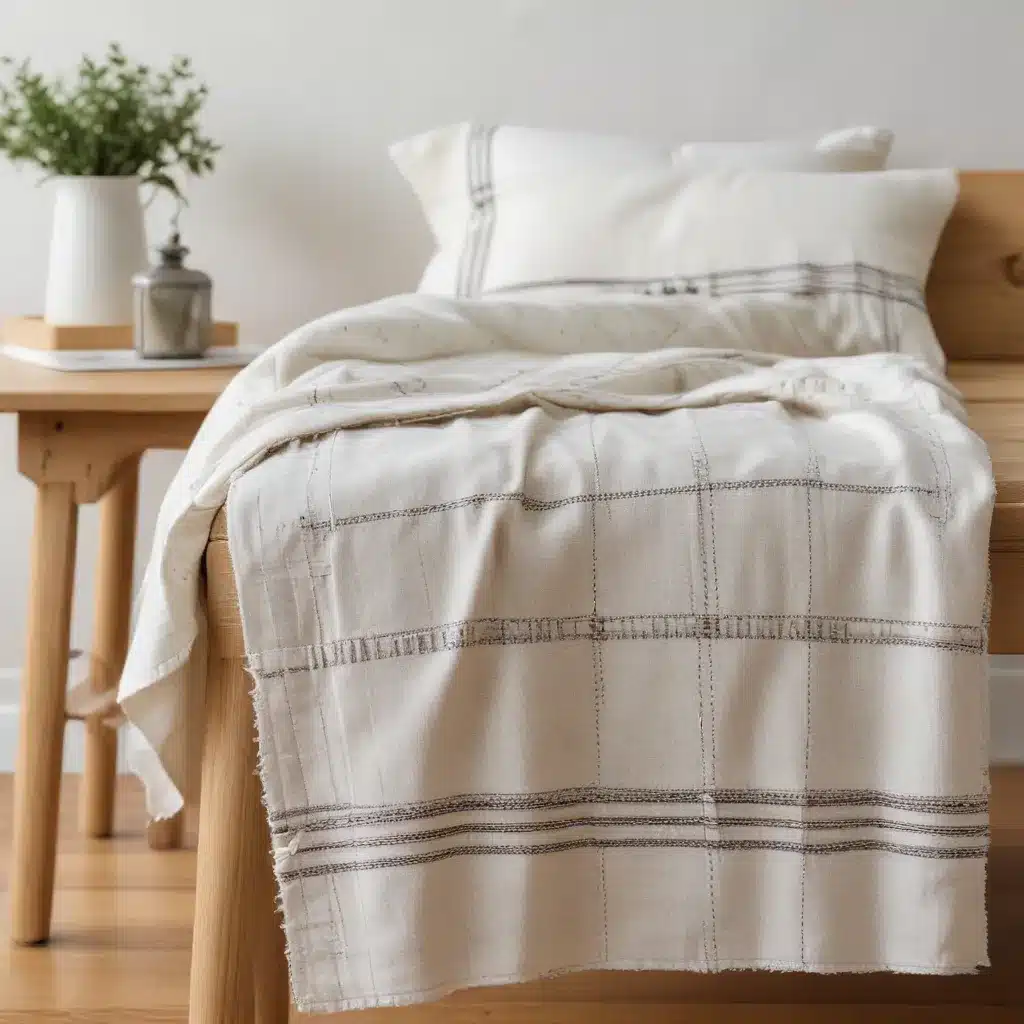
In the heart of the countryside, where the rhythm of farm life echoes through the fields, a new generation is rediscovering the beauty and versatility of handmade textiles. At Crooked Pines Farm, we believe that stitching, weaving, and dyeing are not just practical skills, but a means to express our connection to the land and the timeless traditions that have shaped our rural heritage. Join us as we explore the world of farmhouse-style textiles, from heirloom-quality weavings to beginner-friendly sewing projects.
Traditional Weaving Techniques
The art of weaving has been a cornerstone of farmhouse life for centuries, passed down through generations as a means of creating functional yet stunning textiles. Handwoven rugs, with their intricate patterns and vibrant colors, have long graced the floors of our farmhouse, while hand-loomed curtains and tablecloths have lent an air of rustic elegance to our homes.
Today, we’re seeing a resurgence of interest in these time-honored techniques, as modern homesteaders and DIY enthusiasts seek to infuse their spaces with the warm, organic beauty of handcrafted fabrics. At Crooked Pines, we’ve been experimenting with various weaving methods, from the simple yet striking plain weave to the more complex twill and herringbone patterns. By sourcing natural fibers like wool, linen, and cotton, we’re able to create textiles that not only look beautiful, but also offer superior durability and breathability.
Sustainable Fabric Production
As we’ve delved deeper into the world of handmade textiles, we’ve also become increasingly mindful of the environmental impact of our choices. That’s why we’ve embraced sustainable fabric production techniques, such as natural dyeing with plants and herbs grown right here on the farm. By eschewing harsh chemicals in favor of earth-friendly pigments, we’re able to create vibrant, one-of-a-kind fabrics that tell the story of our land.
Our indigo-dyed throws and pillows have become a beloved staple in our farmhouse, while our madder-dyed runners and placemats add a touch of rustic elegance to our dining room. We’ve even begun experimenting with shibori, an ancient Japanese dyeing method that produces mesmerizing patterns through intricate folding and binding techniques.
Rustic Textile Aesthetics
The beauty of farmhouse-style textiles lies not just in their craftsmanship, but in the inherent character and imperfections that come with handmade production. At Crooked Pines, we celebrate the organic nature of these fabrics, reveling in the subtle variations in color, the soft irregularities of the weave, and the gentle patina that develops over time.
Whether it’s a cozy quilt made from repurposed fabrics or a hand-embroidered table runner, these textiles add depth and warmth to our living spaces, imbuing them with a sense of history and a connection to the land. And as we teach our children the art of weaving and sewing, we’re not just passing on practical skills, but also instilling in them an appreciation for the beauty of the handmade and the value of preserving our rural heritage.
Farmhouse-Inspired Design
Of course, handmade textiles aren’t just for practical use – they can also be transformed into stunning home decor pieces that capture the essence of farmhouse style. At Crooked Pines, we’ve been experimenting with a variety of sewing projects that celebrate the rustic charm of our surroundings.
One of our favorite DIY creations is the ticking cuff pillow cover, which combines a classic farmhouse fabric with a touch of whimsy. By repurposing an old pillow form and adding a handmade applique, we’ve created a unique accent piece that perfectly complements our bedroom’s Farmhouse aesthetic.
Another popular project has been the DIY custom-lined curtains, which allow us to customize the fabric, lining, and dimensions to suit our windows. The process may seem daunting at first, but with a little patience and the right techniques, even beginner sewers can craft professional-looking drapes that elevate the entire room.
Repurposed Textile Crafts
At Crooked Pines, we believe in the power of upcycling – transforming discarded or underutilized materials into something new and beautiful. That’s why we love incorporating vintage textiles into our DIY projects, whether it’s turning an old tablecloth into a linen tote bag or repurposing worn-out clothing into a farmhouse-style tank top.
These projects not only allow us to add unique, one-of-a-kind pieces to our homes, but they also help reduce waste and honor the history of the materials we use. Plus, they’re a great way to get the whole family involved in the creative process, sparking conversations about sustainability and the importance of mindful consumption.
Beginner Sewing Tutorials
If you’re new to the world of sewing and textile crafting, don’t worry – we’ve got you covered. At Crooked Pines, we believe that anyone can learn these skills, and we’ve created a wealth of beginner-friendly tutorials to help you get started.
From simple tank tops to custom-lined curtains, our step-by-step guides will walk you through the process, ensuring that you can create beautiful, farmhouse-inspired pieces without feeling overwhelmed. And don’t be afraid to experiment – the beauty of handmade textiles lies in the unique character that each project brings to your home.
So whether you’re a seasoned weaver or a novice sewer, we invite you to join us on this journey of rediscovering the art of farmhouse-style textiles. With a little creativity and a lot of heart, you can transform your living spaces into a cozy, inviting haven that celebrates the beauty of the handmade and the timeless traditions of rural life.


